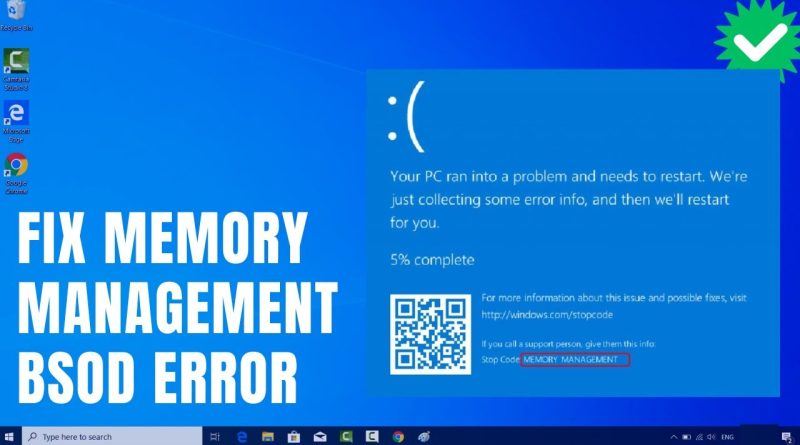How To Fix Memory Management BSOD Error Windows 10/11?
**Title: How to Fix Memory Management BSOD Error in Windows 10/11 | Troubleshooting Guide**
**Description: The Memory Management BSOD (Blue Screen of Death) error can be a frustrating and disruptive issue on your Windows 10/11 system. In this comprehensive troubleshooting guide, we’ll walk you through the steps to diagnose and resolve this error, which is often caused by issues related to RAM or memory. Whether you’re dealing with sudden crashes or system instability, we’ll provide you with step-by-step solutions to get your computer back on track. Learn how to address the Memory Management BSOD error with confidence and ensure the stability of your system.**
🚫 Discover how to troubleshoot and fix the Memory Management BSOD error in Windows 10/11, a common cause of system crashes.
🚫 Explore step-by-step instructions for identifying and resolving memory-related issues.
🚫 Learn various methods to tackle this error, from checking RAM to updating drivers and more.
🚫 Ensure the stability and performance of your Windows system with these comprehensive instructions.
🚫 Join us as we guide you through each step to get rid of the Memory Management BSOD error.
**Troubleshooting Steps for Memory Management BSOD Error in Windows 10/11:**
1. **Check RAM Modules:**
– Physically inspect and test your RAM modules for potential issues.
2. **Windows Memory Diagnostic:**
– Use the built-in Windows Memory Diagnostic tool to check for memory problems.
3. **Update Device Drivers:**
– Ensure your drivers, especially graphics and chipset drivers, are up to date.
4. **Disk Cleanup:**
– Perform a disk cleanup to free up storage space on your system drive.
5. **Check for Windows Updates:**
– Make sure your system is running the latest Windows Updates.
6. **Run System File Checker (SFC):**
– Use the System File Checker to scan and repair corrupted system files.
7. **Run Deployment Imaging Service and Management Tool (DISM):**
– Run DISM to repair Windows images and component store corruption.
8. **Check for Malware:**
– Use reputable antivirus and anti-malware tools to scan for and remove potential threats.
9. **Check for Disk Errors:**
– Use the Check Disk utility to scan and repair disk errors.
**Important Notes:**
– Always back up your important data before performing any troubleshooting, as some steps may involve system changes.
– Be cautious when making system changes and follow the instructions closely.
**Why Fix the Memory Management BSOD Error:**
– **System Stability:** To prevent sudden crashes and ensure your system runs smoothly.
– **Data Safety:** To safeguard your data and prevent data loss.
By following our guide, you’ll be able to troubleshoot and potentially fix the Memory Management BSOD error in Windows 10/11.
Don’t forget to like, share, and subscribe for more valuable tech tips, troubleshooting guides, and Windows tutorials. Keep your system running smoothly and crash-free with confidence using our step-by-step guide!
Hashtags: #MemoryManagementError #BSOD #Windows10 #Windows11 #Troubleshooting #TechGuide #TechSolutions #TechKnowledge #SystemStability
how to repair windows 7




yo you got discod i wanna colab